Abstract
The concept of the stationary ecological life-table has been applied to populations of the three main species of schistosomes affecting man. In such a system, the net reproductive rate should be equal to 1.0, with reproduction and mortality balancing each other. Calculations are made of net reproduction in both snail and mammal hosts and of the probabilities of transmission from each host to the other. By far the most complete data are those for Schistosoma japonicum, for which the net reproductive rate is calculated as 0.588. The error probably represents the inadequacy of information on rat populations. Using much less complete data, the net reproductive rate for S. mansoni is calculated as 1.85 and for S. haematobium as 2.74. The relative departure from the expected value of 1.0 thus reflects the lack of complete information on the respective parasites. Details of the method and examples of each kind of calculation are given.
It is estimated that with adequate data from three or four areas with a range of transmission rates, a predictive model could be constructed for the epidemiology of one species of parasite, and that adequate staff could obtain the necessary data in two-and-a-half years.
Full text
PDF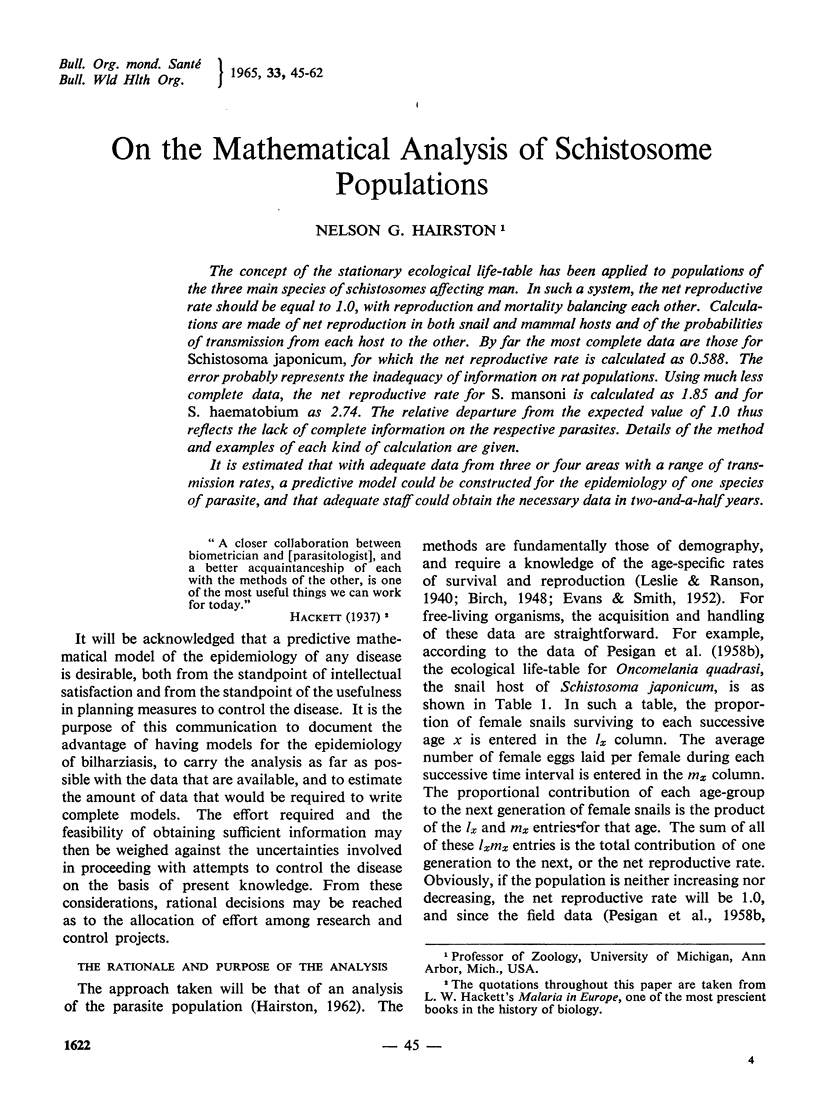


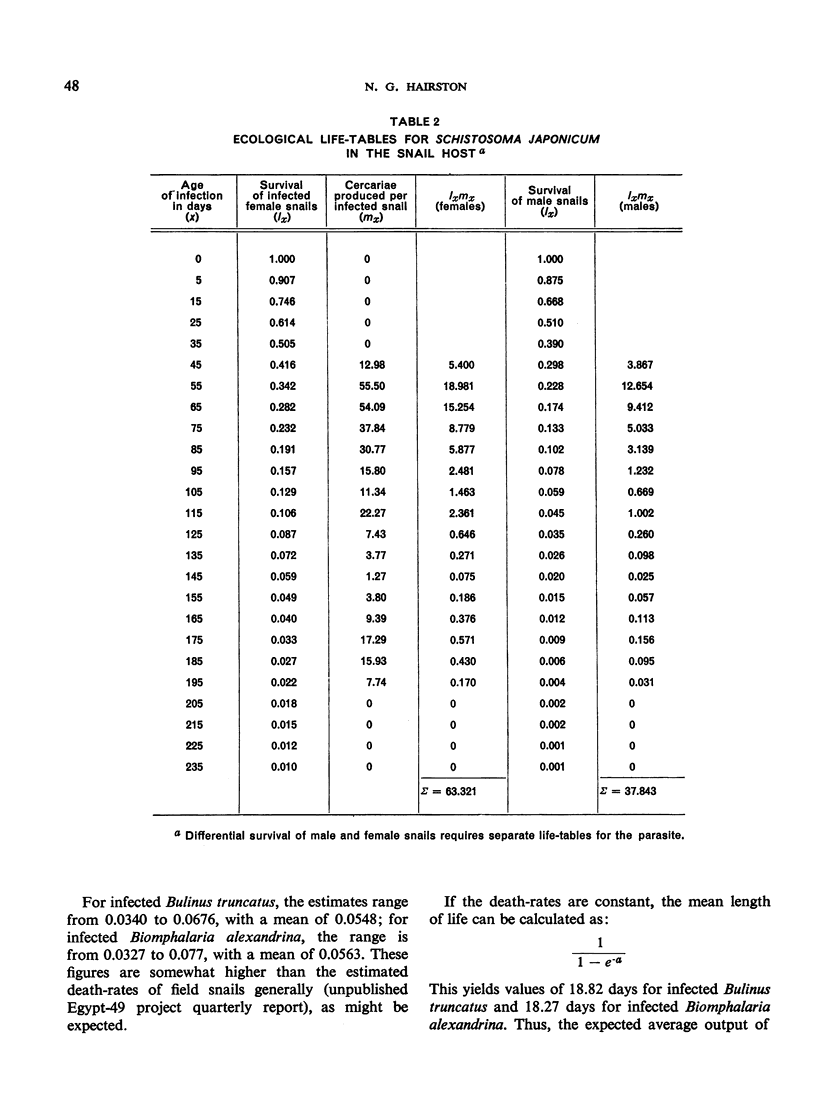

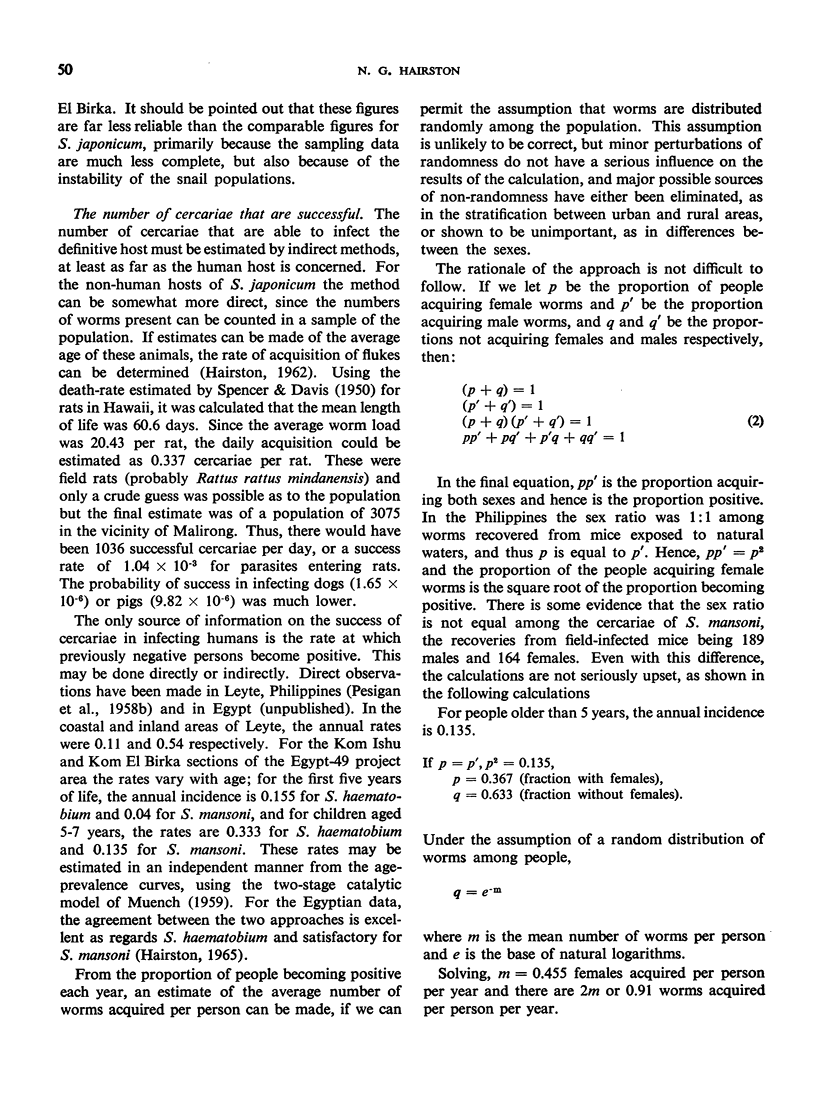
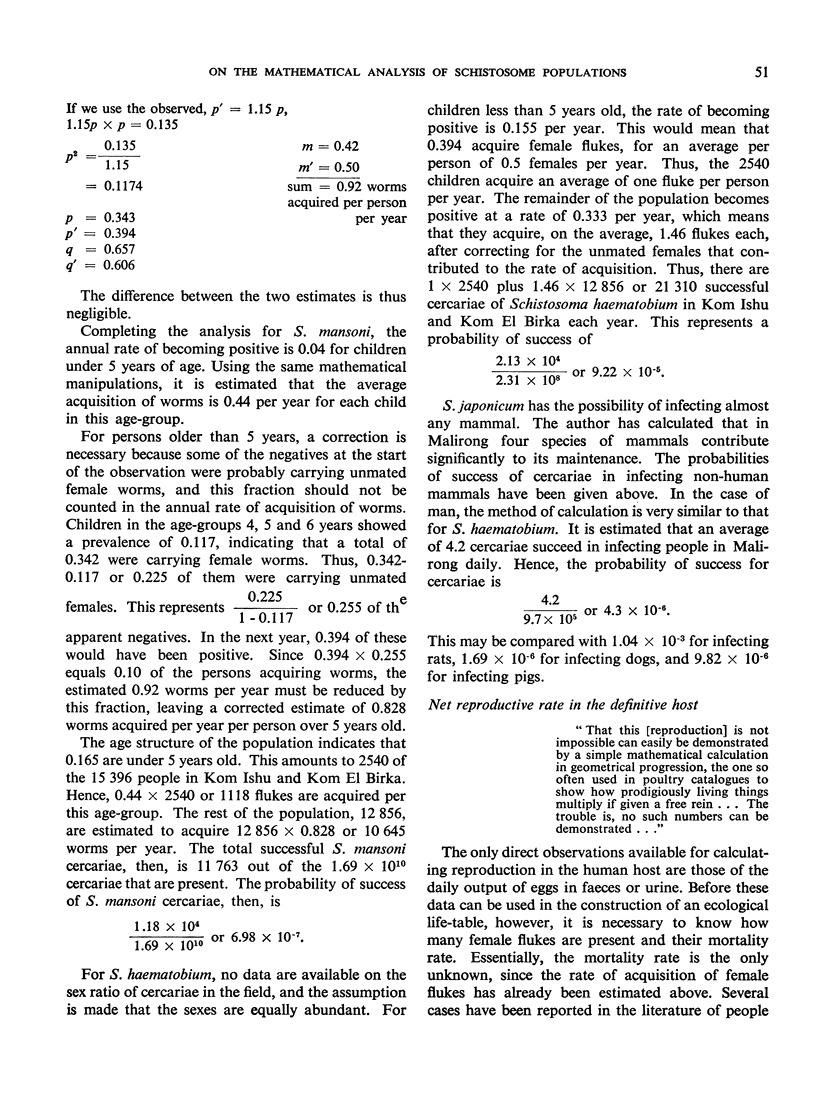
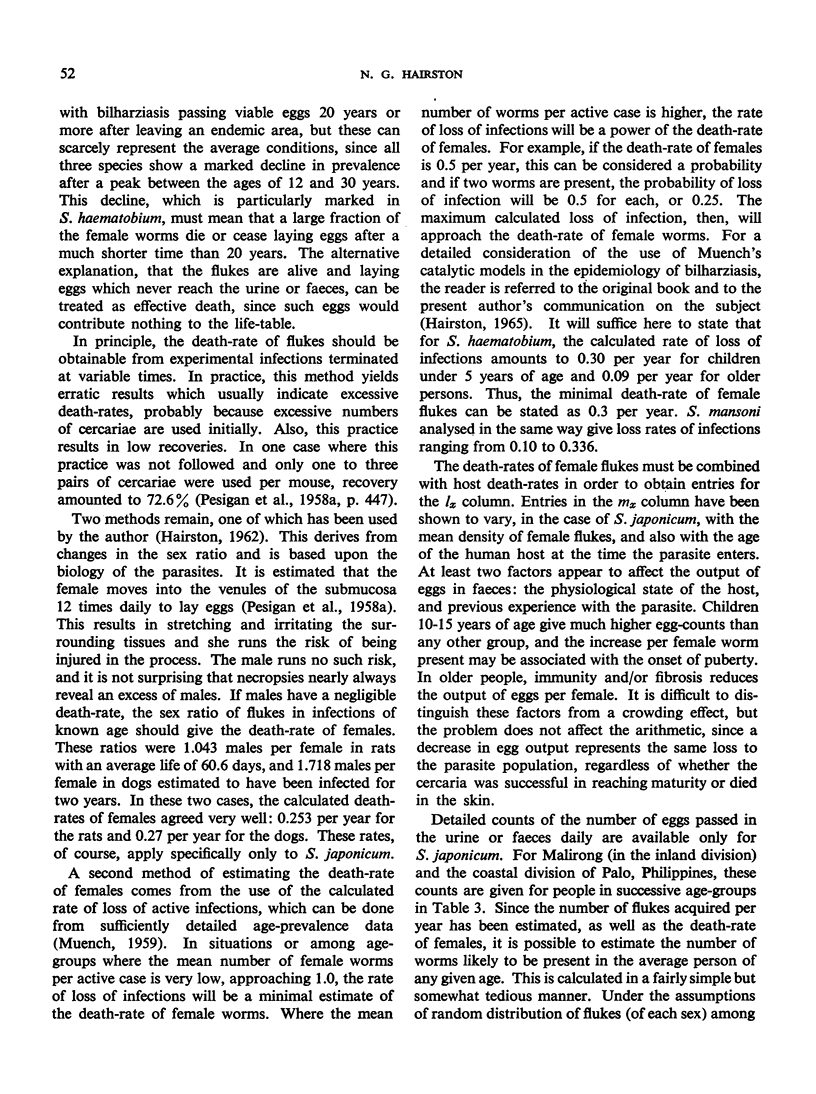
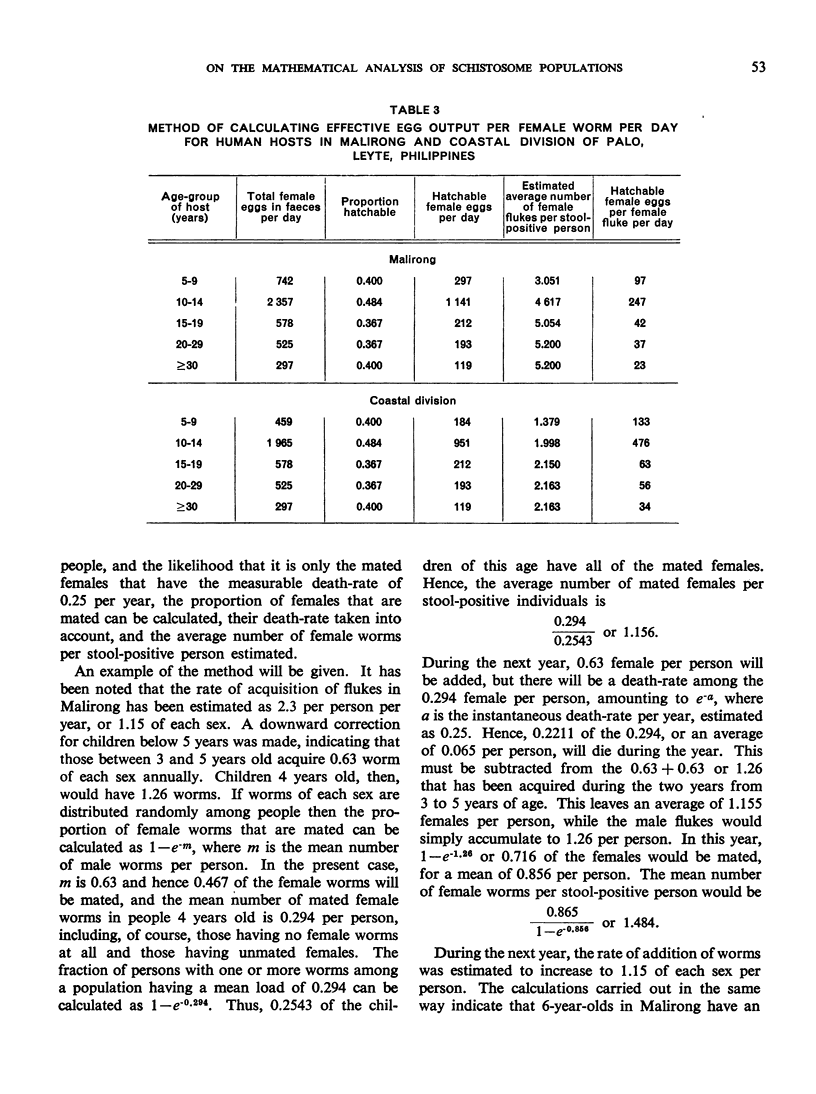
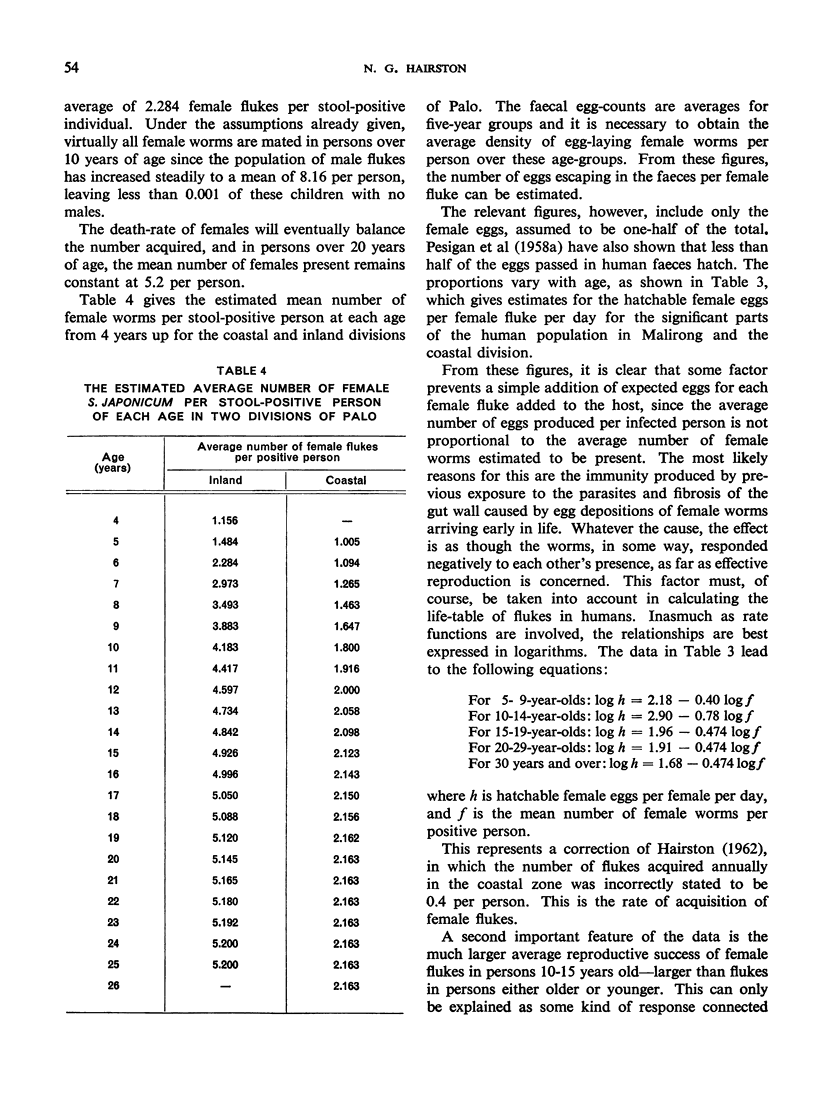
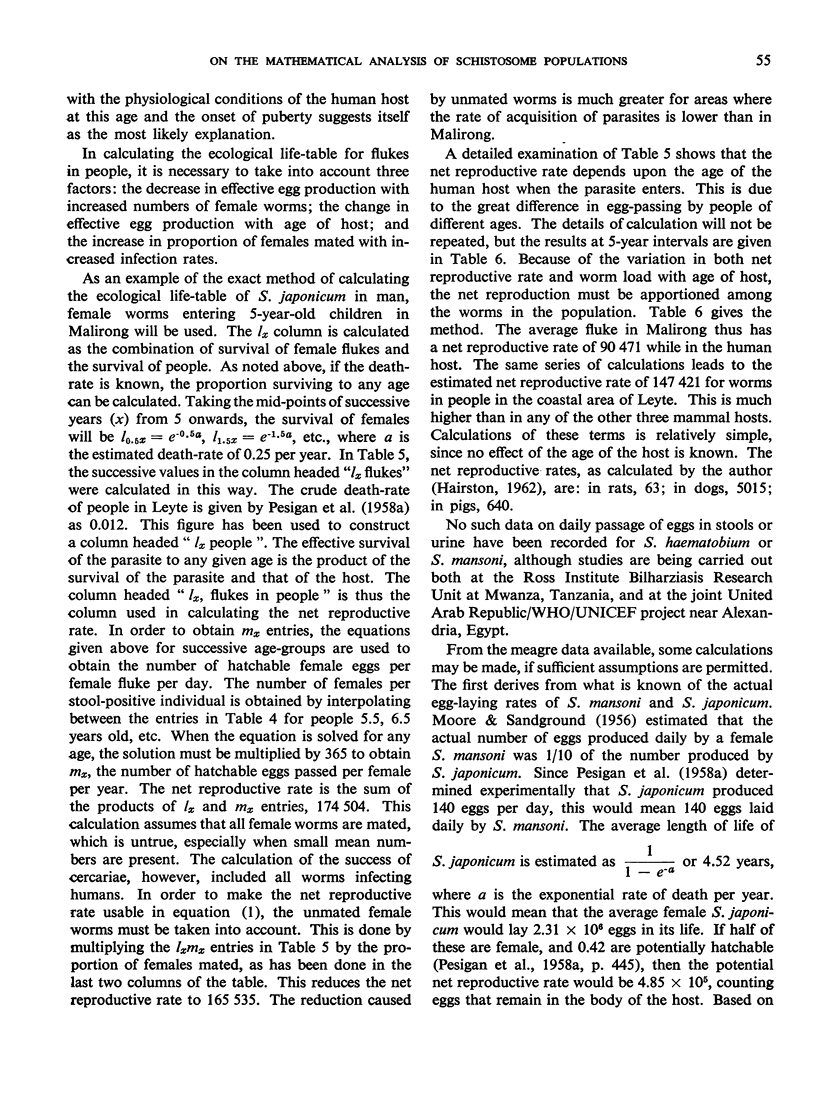
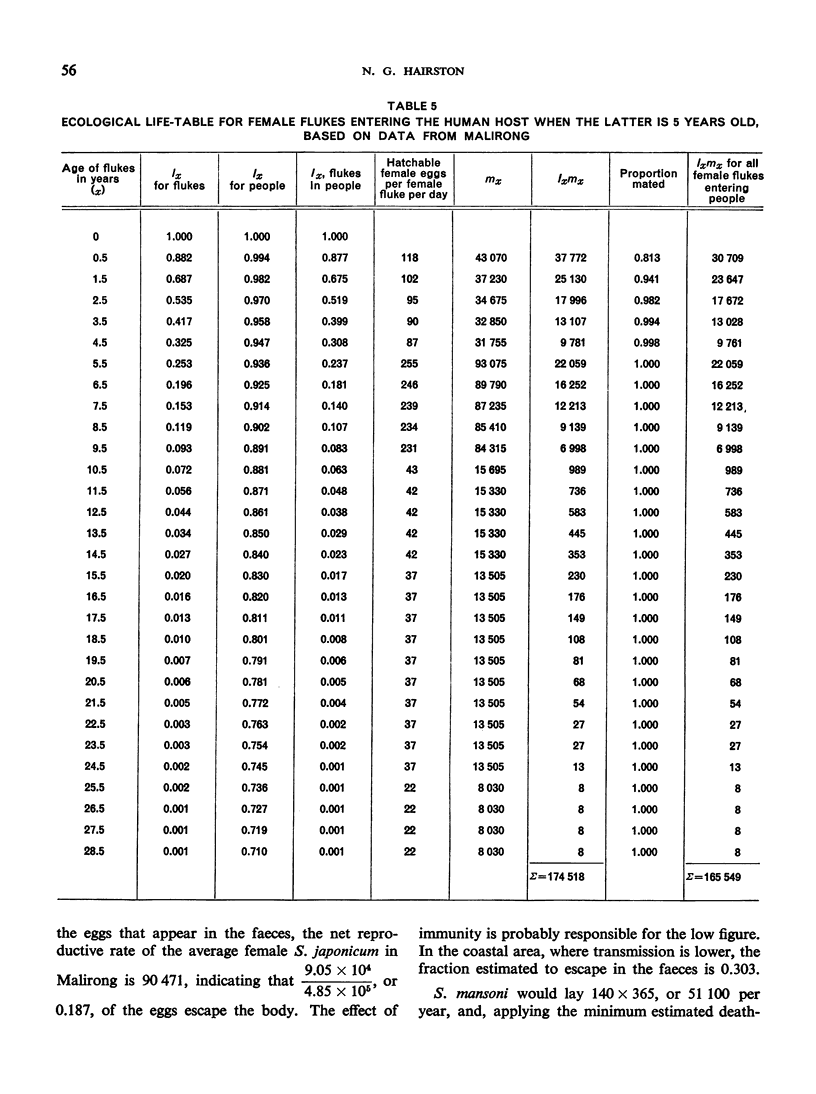
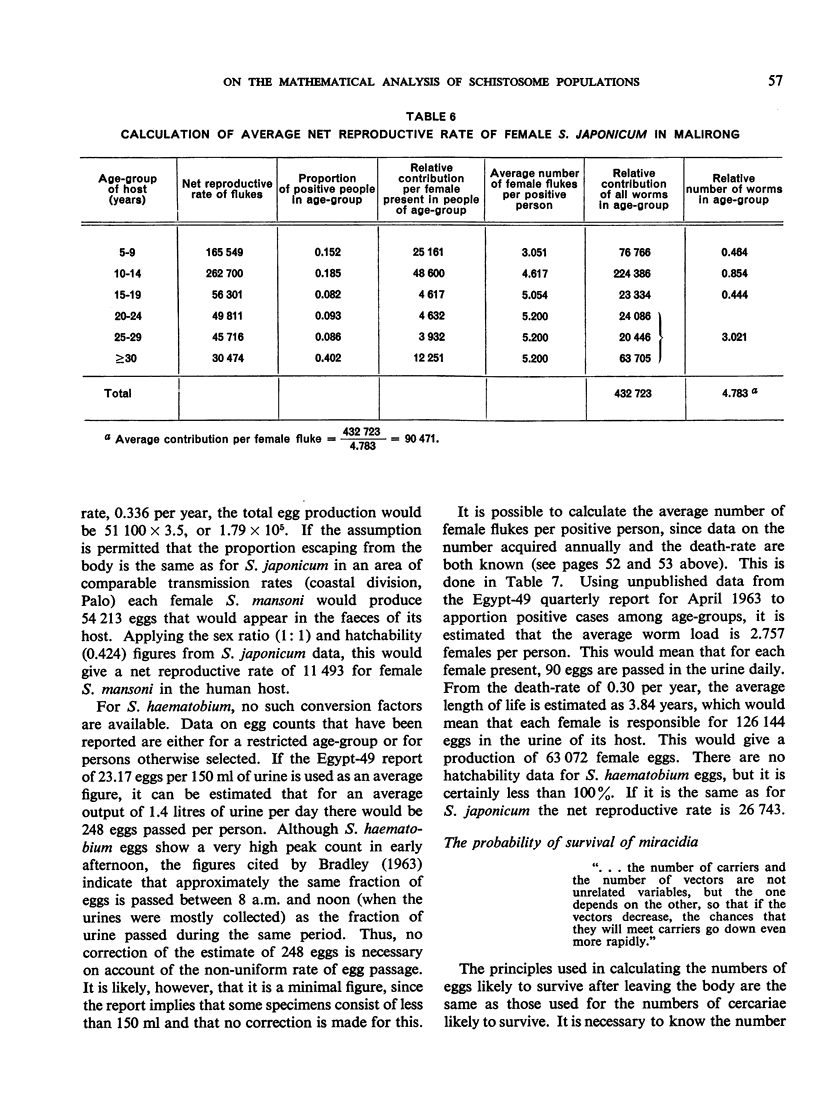
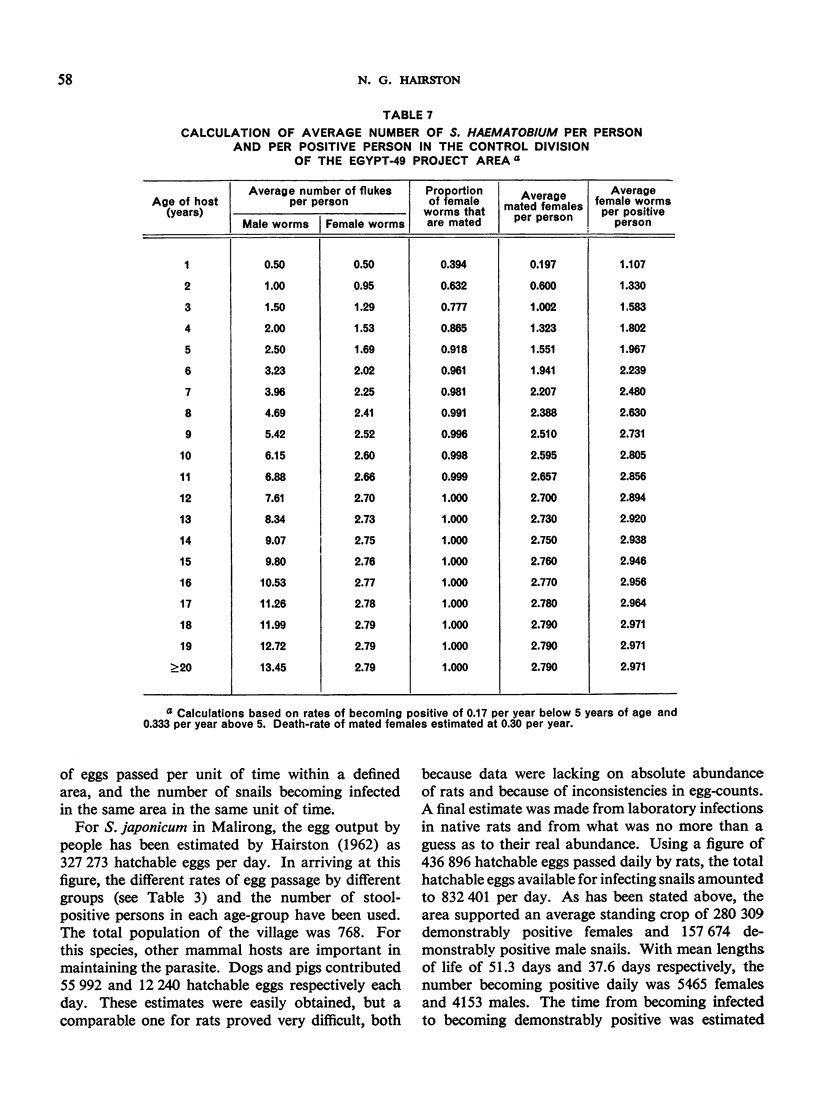

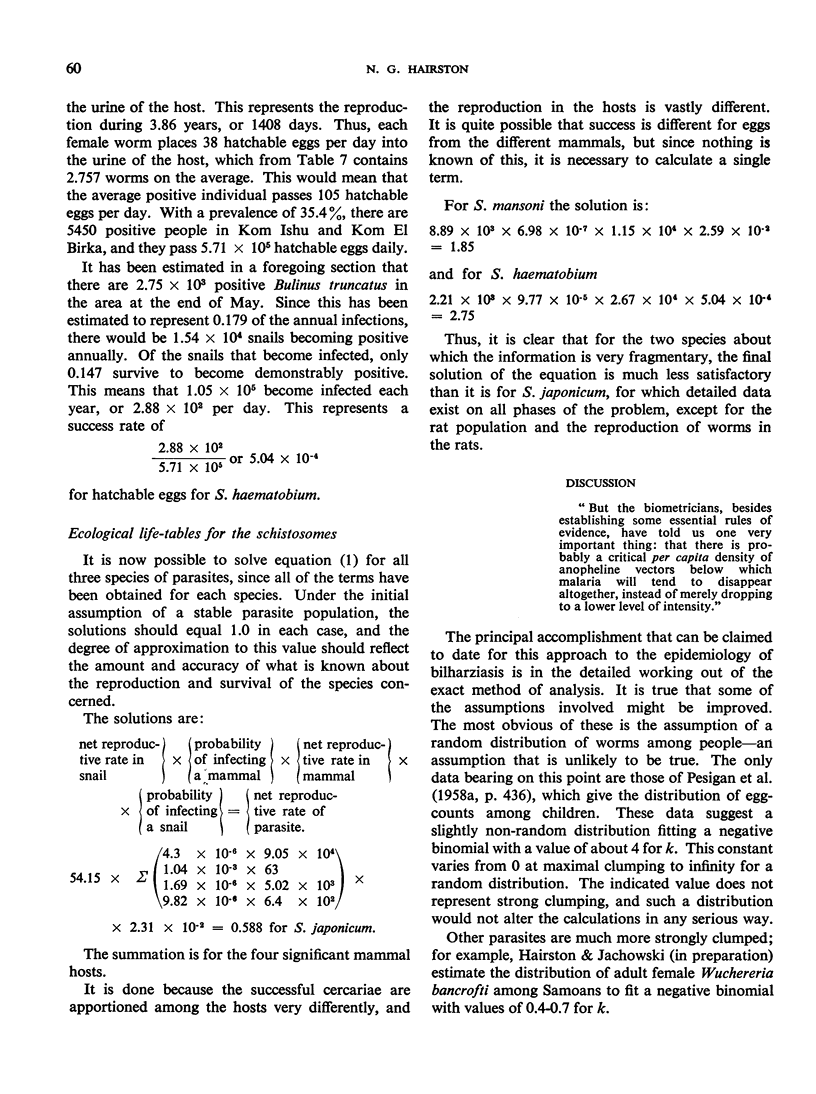
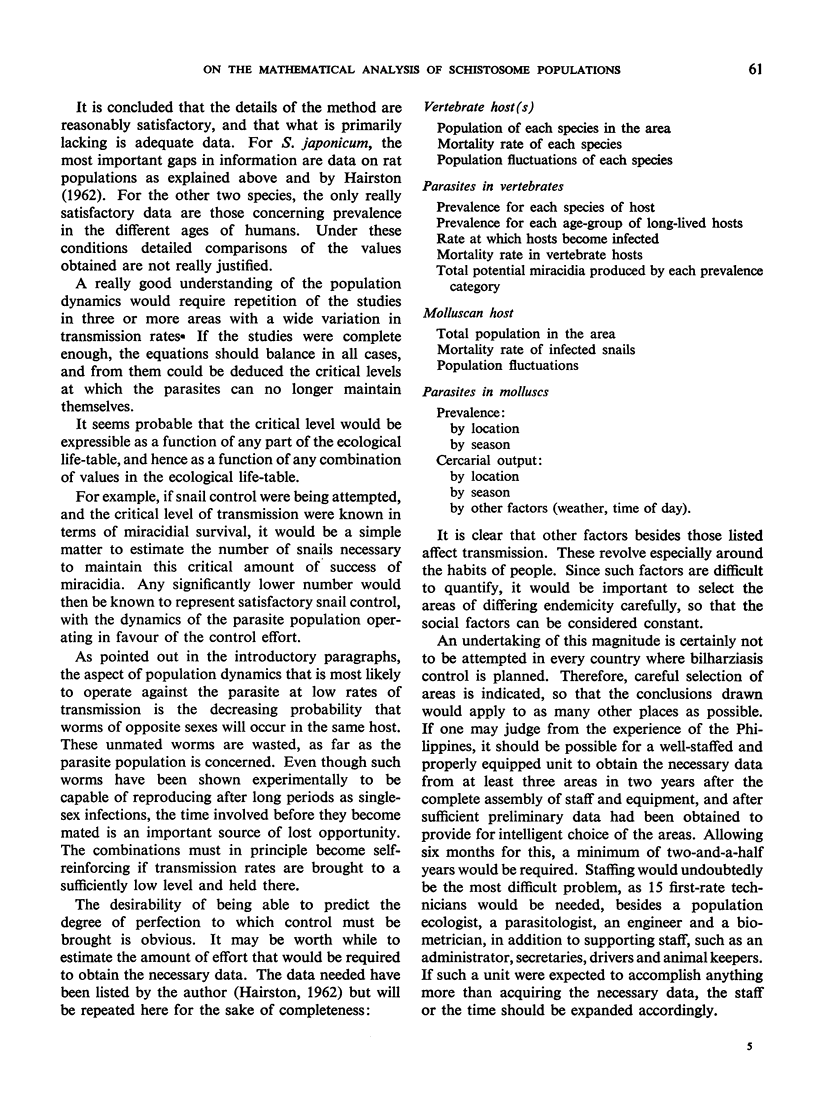
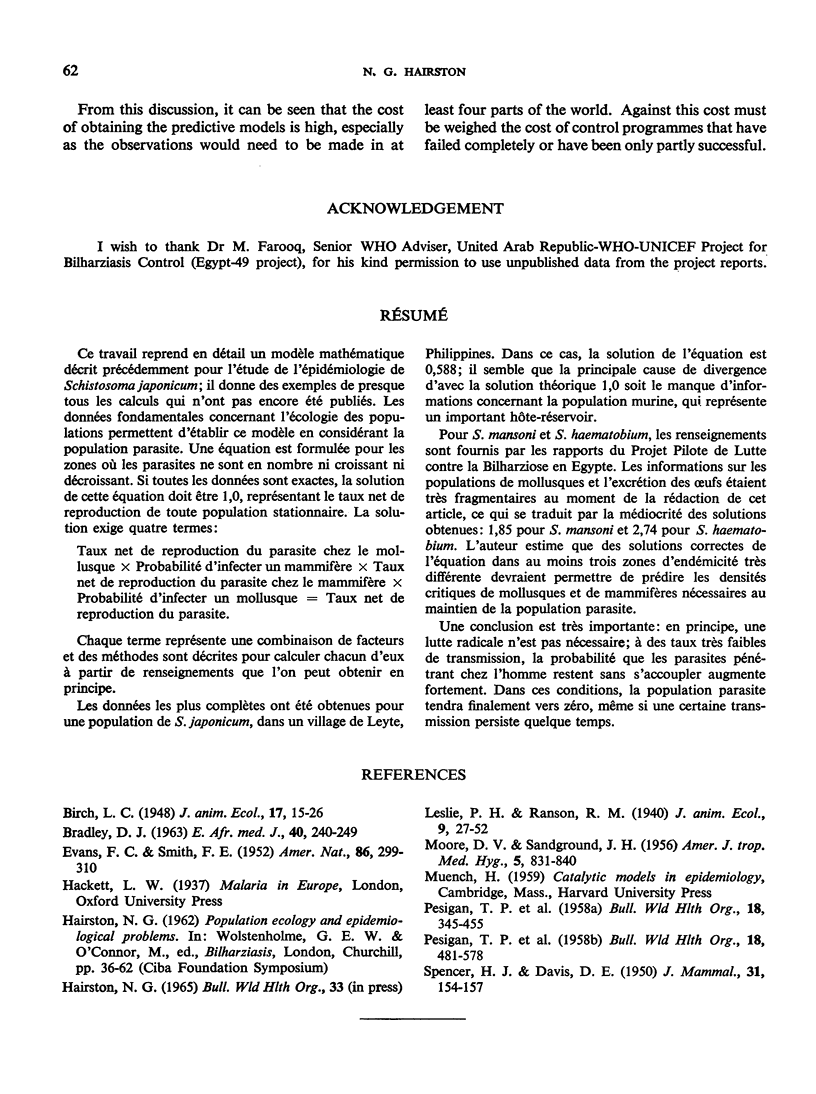
Selected References
These references are in PubMed. This may not be the complete list of references from this article.
- BRADLEY D. J. A quantitative approach to bilharzia. East Afr Med J. 1963 May;40:240–249. [PubMed] [Google Scholar]
- MOORE D. V., SANDGROUND J. H. The relative egg producing capacity of Schistosoma mansoni and Schistosoma japonicum. Am J Trop Med Hyg. 1956 Sep;5(5):831–840. doi: 10.4269/ajtmh.1956.5.831. [DOI] [PubMed] [Google Scholar]
- PESIGAN T. P., FAROOQ M., HAIRSTON N. G., JAUREGUI J. J., GARCIA E. G., SANTOS A. T., SANTOS B. C., BESA A. A. Studies on Schistosoma japonicum infection in the Philippines. 1. General considerations and epidemiology. Bull World Health Organ. 1958;18(3):345–455. [PMC free article] [PubMed] [Google Scholar]
- PESIGAN T. P., HAIRSTON N. G., JAUREGUI J. J., GARCIA E. G., SANTOS A. T., SANTOS B. C., BESA A. A. Studies on Schistosoma japonicum infection in the Philippines. 2. The molluscan host. Bull World Health Organ. 1958;18(4):481–578. [PMC free article] [PubMed] [Google Scholar]


